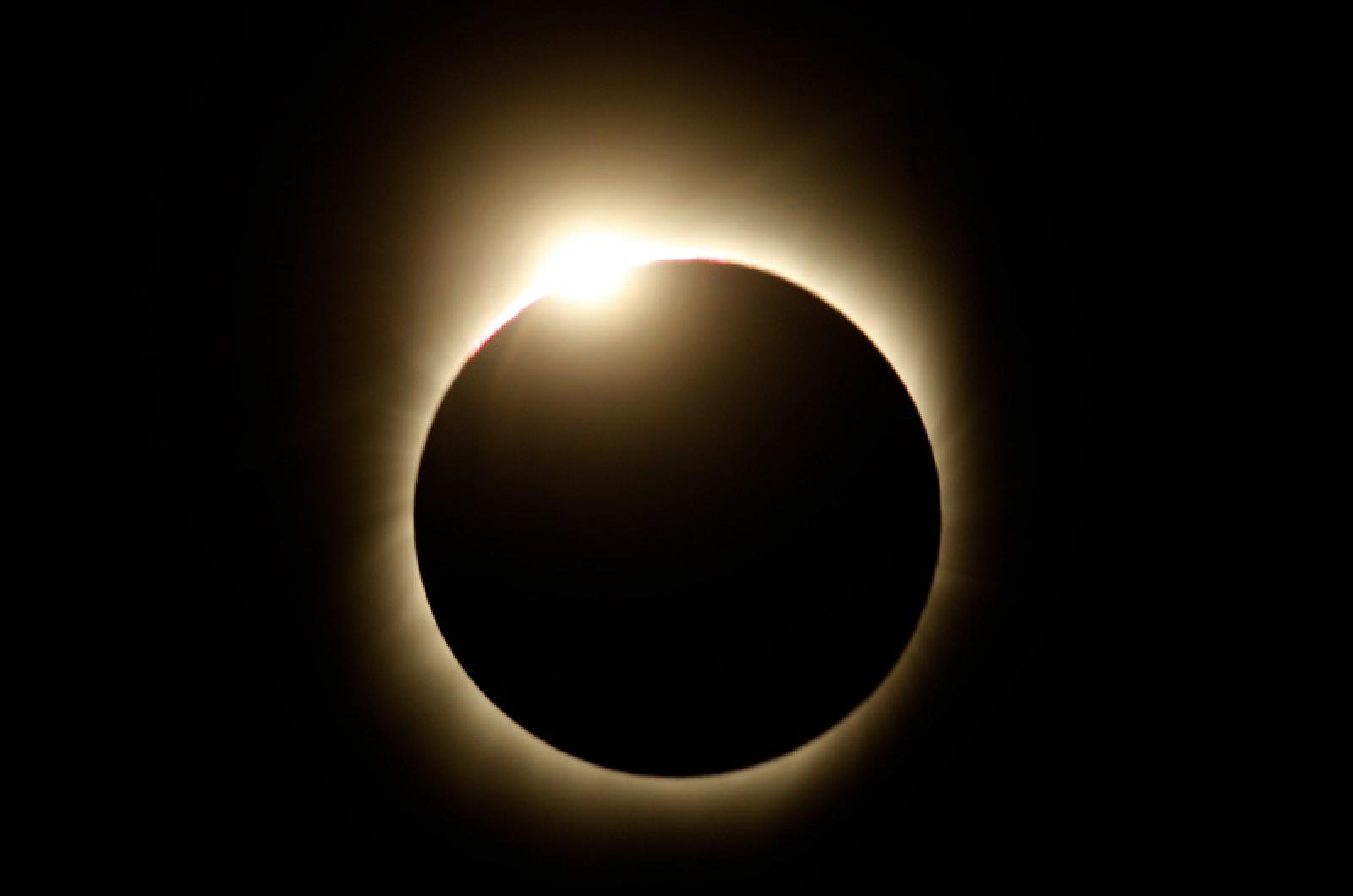Don’t be afraid of the dark.
Good advice for human and beast alike, since daytime dark is coming. A total solar eclipse will be visible across the continental United States on August 21, 2017. Those lucky enough to be in the path of totality, a swath of land from Oregon to South Carolina, will experience the complete effects of the moon blocking the sun.
The rest of us will see only part of the eclipse. Locally, we will see the effects of this syzygy (alignment of three astronomical objects) for a few hours starting at approximately 1:30 p.m., with maximum coverage at 2:48 p.m., and ending by 4:01 p.m. on Monday.
Historically, solar eclipses brought great concerns, especially since they often happened suddenly and, early on, without the benefit of internet and televised warnings. Homer’s Odyssey described a palpable fear of a total solar eclipse in 1178 BC: “the Sun has perished out of heaven, and the evil mist hovers over all.”
Darkness and temperature drop will be the most obvious evil or not-so-evil manifestations. True doom and gloom is saved for those that look directly at the sun.
Proper eclipse viewing is down to a science, but take to heart in the warnings to protect your eyes. Get your eclipse glasses for viewing. It is no joke that you shouldn’t look directly at the sun during a solar eclipse or even at other times. The sun is powerful and your eyes are not adapted to its potent rays. Damage to the retinal cells for those that don’t heed this advice can be serious. Blurred vision, persistent yellow or dark spots in regular vision, and even loss of sight can occur. Don’t risk it.
These physical effects are well proven, but what isn’t as crystal clear is the effect of eclipses on behavior, especially on animals. Though mostly anecdotal, some observations do show animal behavioral changes.
Interpretations abound, some more credible than others. Astronomers in the 1500s claimed that birds fell out of trees and stopped singing during a solar eclipse. Victorian-era observers asserted that ants stopped in their tracks, ceasing work and remaining motionless during an eclipse. Farm animals have been known to return to the barn or lay down as if it was the end of the day. And some animals, such as chimpanzees, congregate, perhaps for safety.
More modern scientific studies do show some interesting behavior. Diurnal (daytime) reef fish have been observed seeking shelter, while nocturnal species emerge from the reef thinking their time has come to be active. One species of orb-weaving spider dismantled its web during a total eclipse only to rebuild when the sun returned and, in another case, lizards behaved like it was sunset.
This is not at all surprising, but so far animal behavior during total solar eclipse has not been well studied. You can help remedy that. The California Academy of Sciences is inviting everyone to be part of a citizen science project to record animal and plant activity during the upcoming solar eclipse. Using iNaturalist, a phone app, pictures and observations are requested during eclipse totality and 30 minutes before and after.
Whether you are an active or passive observer of this eclipse or current events, it is good to remember the words of Desmond Tutu: “Hope is being able to see that there is light despite all of the darkness.”
Suzan Bellincampi is director of the Felix Neck Wildlife Sanctuary in Edgartown, and author of Martha’s Vineyard: A Field Guide to Island Nature.







Comments
Comment policy »